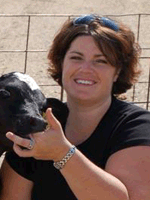
Give Your Pasteurizer a Good Once-over
 By Ann Hoskins, Vita Plus calf products coordinator
By Ann Hoskins, Vita Plus calf products coordinator
Waste milk and colostrum pasteurizers are now standard equipment on many of today’s calf operations. While feeding pasteurized waste milk and colostrum can have many benefits, it can also create a lot of problems if the units are not maintained.
I often see pasteurizers work well for a while, but they don’t receive the daily or long-term maintenance they require. When purchasing a pasteurizer, you have to go into it with the mindset that you are now in the milk processing business. That means you have many cleaning and quality control standards to meet to ensure you’re producing a quality product for your calves.
Collecting waste milk
The theory “garbage in, garbage out” truly applies in the world of pasteurization. You cannot expect your pasteurizer to do all the work for you. In a properly operating system, a pasteurizer destroys 98 to 99 percent of the bacteria. Successful pasteurization is indicated when the standard plate count (SPC) is less than 20,000 colony forming units (cfu) per milliliter.
Here are a couple tips for properly handling waste milk and colostrum:
- Use the same procedures recommended for saleable milk.
- Receiving tanks, buckets, bottles, bags, etc. must be clean. Milk should be refrigerated if it is to be held for more than one hour prior to pasteurization. Small, refrigerated stainless steel bulk tanks have been used successfully on many farms.
- Cool milk to below 40 degrees F within one hour of milking and hold it at this temperature until pasteurization.
- Waste milk can be stored in a refrigerated unit for up to three days before pasteurizing. If the milk is not used in a timely manner, discard it, clean the tank and refill with fresh milk.
- Flush receiving and storage tanks with warm water after emptying.
- Thoroughly scrub milk contact surfaces with the detergent used to clean the bulk tank.
- Use an acid sanitizer rinse immediately before filling tank with milk.
Pasteurization
Most pasteurization systems on dairies are either batch or high temperature/short time (HTST) units.
A batch pasteurizer is a tank with a heating element or jacket that heats milk to 145 degrees F and maintains this temperature for 30 minutes. Milk is agitated to eliminate “cold” spots and ensure that the milk reaches and remains at the correct temperature. Batch systems available commercially are programmed to agitate milk and control heating and cooling cycles. Batch pasteurizers are generally less expensive to purchase and install than HTST systems.
HTST systems operate similarly to plate coolers, except they first heat the milk and then cool it for feeding or further storage. Most on-farm HTST systems achieve pasteurization when milk reaches 161 degrees F for 15 seconds. These systems process milk more rapidly than batch systems, and heating, cooling, and cleaning processes are more readily automated. However, HTST units cost more than batch units and an adequate supply of hot water is more critical to successful operation.
Sanitize the unit immediately after pasteurization is complete. Most batch pasteurizers are cleaned manually with a water rinse, followed by alkaline detergent and an acid rinse. Although cleaning HTST units can be automated, several important factors should be considered to keep equipment operating to its designed capacity:
- Clean after each use.
- Use cleaners and sanitizers in accordance with manufacturer instructions.
- When cleaning, water temperatures should remain between 170 and 180 degrees F.
- Once pasteurization is complete, immediately flush the system with lukewarm water until water runs clear.
Quality assurance
Pasteurizers should be equipped with time-temperature recording charts to make sure they are functioning properly. Keep an accurate thermometer in the area to check the accuracy of the recording thermometer and monitor milk temperature prior to feeding. Do this on a monthly basis or more frequently if problems arise.
Work with a laboratory capable of testing milk for total solids, fat percentage, protein percentage and SPC. In most cases, you can have your samples checked where you send your milk. Your local field representative can help direct you to the nearest lab along with correct sampling procedures.
Quality goals for pasteurized samples are:
- SPC less than 20,000 CFU per mL
- Coliform less than 100 CFU per mL
- Total solids greater than 12 percent
- Fat percentage greater than 3.5 percent
- Protein percentage greater than 3.0 percent
Samples should be taken pre-pasteurization, post-pasteurization and at the last calf fed. This will tell you the quality at the start, if your pasteurizer is working, and if you equipment is clean.
Startup operations should institute a rigorous sampling schedule (at least weekly) during the first month of operation. Once you have a baseline, you can go to a biweekly or monthly schedule. If you are seeing more scours or treatments, bacteria testing should be on the top of the list for troubleshooting.
Monitoring your pasteurizing system and performing regular maintenance will ensure you are feeding the highest quality milk to your calves.
| Category: |
Equipment Sanitation Starting Strong - Calf Care |

